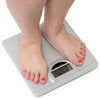Just ‘weight’ until menopause
Women tend to carry excess fat in their hips and thighs, while men tend to carry it on their stomachs. But after menopause, things start to change: many women’s fat storage patterns start to resemble those of men. This indicates that there’s a link between estrogen and body fat storage. This connection is well documented, but the underlying mechanisms remained poorly understood until now.
New research conducted by Sylvia Santosa, assistant professor in Concordia University’s Department of Exercise Science and Canada Research Chair in Clinical Nutrition, gives us a new look at the connection between fat storage and estrogen. By examining the fat storage process at a cellular level, Santosa and co-author Michael D. Jensen of the Mayo Clinic in Rochester, Minnesota, reveal that certain proteins and enzymes are more active in post-menopausal women. These proteins correspond with fat storage. Their findings were published in the March 2013 issue of Diabetes.
“The fat stored on our hips and thighs, is relatively harmless,” explains Santosa, who is also a member of Concordia’s PERFORM Centre for better health through prevention. “But the fat stored around the abdomen is more dangerous. It has been associated with diabetes, heart disease, stroke and even some cancers. When post-menopausal women put on more abdominal fat, they dramatically increase their risk for these health problems. Given these dangers, it is very important to understand the how the lower levels of estrogen associated with menopause changes where fat is stored.”
Santosa’s research compared fat storage in pre- and post-menopausal women. The 23 women who participated in the study were in the same age range, and had similar Body Mass Indices and body fat composition. These similarities allowed Santosa to isolate the effects of estrogen on fat absorption and storage.
She and Jensen were able to examine the activity of certain enzymes and proteins that regulate fat storage in post-menopausal women’s abdomens and thighs. By considering these factors together rather than in isolation, the researchers determined conclusively that the overall fat storage “machinery” is more active in post-menopausal women. In other words, these cells now store more fat than they did before menopause.
In addition, post-menopausal women burned less fat than their pre-menopausal colleagues. These changes mean that their cells are not only storing more fat, but are also less willing to part with it. This combination is a recipe for rapid weight gain. “Taken together, these changes in bodily processes may be more than a little surprising – and upsetting – for women who previously had little trouble managing their weight,” comments Santosa.
Though the increased cellular activity revealed by this study was not specific to the abdominal region, more fat stored overall means more abdominal fat. Evidence of changes in the fat storage pathways after menopause is an important contribution to understanding why post-menopausal women begin to put on more visceral fat.
Says Santosa, “the information revealed by our study is valuable not only to post-menopausal women and their doctors, but to obesity studies more generally. A clearer picture of which proteins and enzymes increase fat storage makes those productive targets for future medical advances in the fight against obesity.”
(Source: Concordia University : Diabetes)
More information
 | For more information on menopause, including symptoms and management of menopause, as well as some useful animations and videos, see Menopause. |
 | For more information on obesity, health and social issues, and methods of weight loss, as well as some useful tools, see Obesity and Weight Loss. |
Dates
Created by:

 Login
Login














